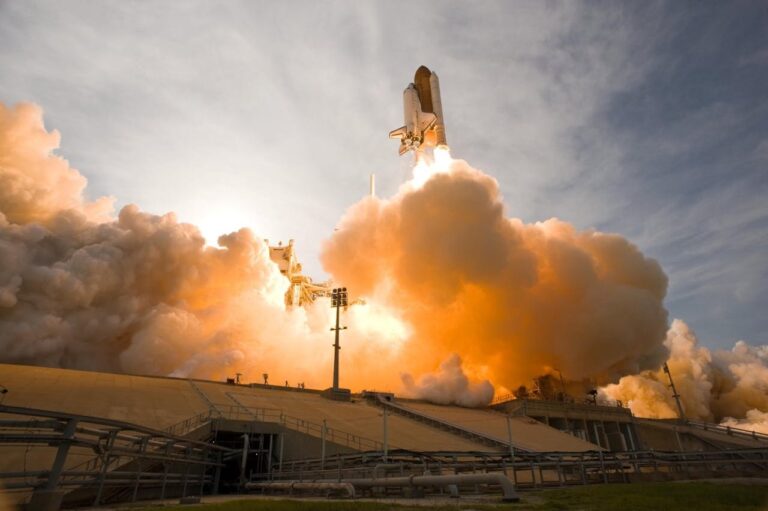The Psychology of Isolation in Space
Space travel fascinates us. The idea of venturing into the great unknown has captivated humanity for generations, inspiring leaps in science, engineering, and even storytelling. But as we take bold steps toward colonizing planets and planning deep-space missions, another crucial frontier demands attention—the psychology of space travel.
The question arises, could the isolation of space bring humans closer together? This blog will explore the psychological challenges of long-term isolation, the innovative coping mechanisms in place, the role of human connection during space missions, and how these insights could reshape our understanding of connection here on Earth.
The Isolation Challenge
Long-term isolation in the vastness of space is one of humanity’s most significant psychological hurdles. Astronauts frequently endure months or even years away from their families, living in confined quarters without the comforts of home. This detachment from Earth poses challenges that go far beyond physical survival—it affects the mental and emotional well-being of those traversing the cosmos.
Implications of Space Isolation
Research shows that extended periods of isolation can lead to a phenomenon known as “space adaptation syndrome,” which includes fatigue, mood swings, and even depression. The monotony of the environment and the inability to experience the outdoors can exacerbate feelings of loneliness and restlessness.
For many astronauts, the physical distance from loved ones is compounded by temporal separation. On missions to Mars, for example, delays in communication could stretch up to 20 minutes each way, making real-time conversations impossible. This extended isolation can heighten a sense of disconnection from Earth and humanity.
Lessons From Space Missions
Historical examples illustrate these challenges vividly. During the Apollo missions, astronauts reported feelings of loneliness despite their groundbreaking achievements. Similarly, cosmonauts aboard the Mir space station spent months confined to its small interior, sometimes facing interpersonal conflicts stemming from isolation. Perhaps most notably, Scott Kelly documented the psychological trials he faced during his historic year aboard the International Space Station (ISS), detailing how isolation tested his mental resilience.
These experiences highlight the gravity of addressing psychological well-being in space travel, especially as humanity eyes longer, more ambitious ventures.
Coping Mechanisms
Astronauts are no strangers to rigorous preparation. To endure isolation, space agencies develop psychological strategies and leverage cutting-edge technologies to help maintain mental health during missions.
Psychological Training
Before embarking on missions, astronauts undergo extensive training to handle the rigours of isolation. Simulated environments like NASA’s Human Exploration Research Analog (HERA) program prepare astronauts for life confined to tight quarters, mimicking the physical and psychological conditions onboard spacecraft.
Resilience training, mindfulness exercises, and even art therapy form part of their preparation, equipping astronauts with tools to recognize and manage moments of loneliness or stress.
Innovative Solutions
Advanced technologies are taking mental health support to new heights. Virtual reality (VR) has become a popular tool to mitigate the monotony of space. Through VR headsets, astronauts can venture into simulated natural environments like forests or beaches—providing a much-needed psychological escape.
AI-powered virtual assistants, such as CIMON (Crew Interactive Mobile Companion) aboard the ISS, add an unexpected layer of comfort. These “smart companions” can assist astronauts with tasks while serving as conversational partners, helping to ease feelings of isolation.
The Human Connection
Isolation may be a feature of space travel, but human connection remains a vital element of its success.
Social Support in Space
Astronauts rely heavily on their crewmates for emotional support. When operating in confined spaces for extended periods, establishing trust and camaraderie becomes a survival mechanism. Structured team-building activities before and during missions help foster this sense of togetherness.
Bridging the Distance With Technology
Technology, though limited by light-speed constraints, bridges the gap between Earth and space. Video calls, emails, and pre-recorded messages allow astronauts to maintain relationships with family and friends. Astronauts on the ISS frequently share video logs and engage with Earth-based communities through social media—bringing stories of space exploration to our fingertips.
However, communication limitations remain a challenge. For future missions to Mars and beyond, delayed conversations risk amplifying feelings of isolation. Solving this issue with innovative technology will be key to sustaining morale on long-duration missions.
Societal Impact
While these advances are crafted with space missions in mind, they have profound implications for life on Earth.
Lessons for Earthbound Isolation
The strategies developed for space travel are becoming increasingly relevant for addressing isolation on Earth. Remote work, ageing populations, and isolated living situations all point to growing demand for psychological support and connection technologies. The pandemic, perhaps, demonstrated this need most starkly.
- Healthcare systems could adopt space-inspired VR tools to alleviate stress for patients in long-term care.
- Remote professionals may benefit from optimized virtual assistants designed to foster connection and collaboration.
- Mental health support for individuals facing geographic isolation could mirror astronaut training techniques.
Through space exploration, humanity is learning invaluable lessons about how to better care for one another, even when apart.
Looking to the Future
The future of space travel is an exciting one, and with it comes opportunities to explore and refine our understanding of isolation and connection.
Ambitious Missions and Tech Advancements
From planned missions to Mars to the construction of lunar colonies, upcoming endeavours will test humanity’s endurance and ingenuity. Developing spacecraft and habitats that cater to both physical and psychological needs will determine the success of these missions.
Artificial intelligence, robotics, and advanced communication systems are poised to play a central role as humanity pushes further into unknown frontiers. These innovations could not only revolutionize space travel but also bring long-term societal benefits to Earth.
The Bigger Picture
Ultimately, deep-space missions challenge the notion of isolation altogether. At the heart of these travels is a profound sense of curiosity, collaboration, and connection—qualities that reflect the best of who we are as a species.
What Space Teaches Us About Connection
Space travel is as much about discovering the universe as it is about exploring the depths of our humanity. The isolation faced in space reminds us of the importance of relationships, empathy, and resilience. More importantly, it offers incredible opportunities to learn how we can better connect—whether we’re separated by thousands of miles or millions of light-years.
Would you like to share your thoughts on this fascinating topic? Comment below and join the conversation!





















0 Comments